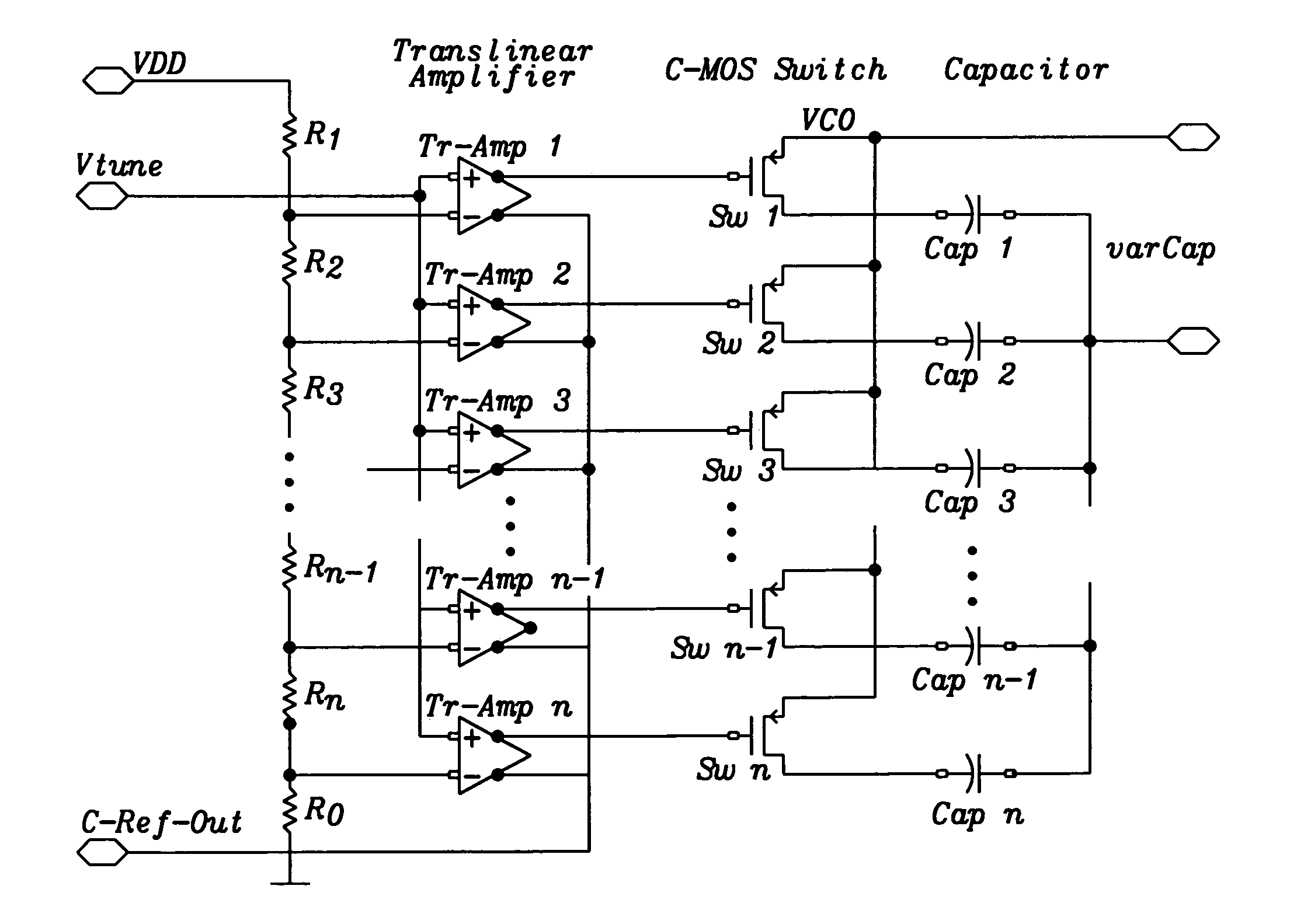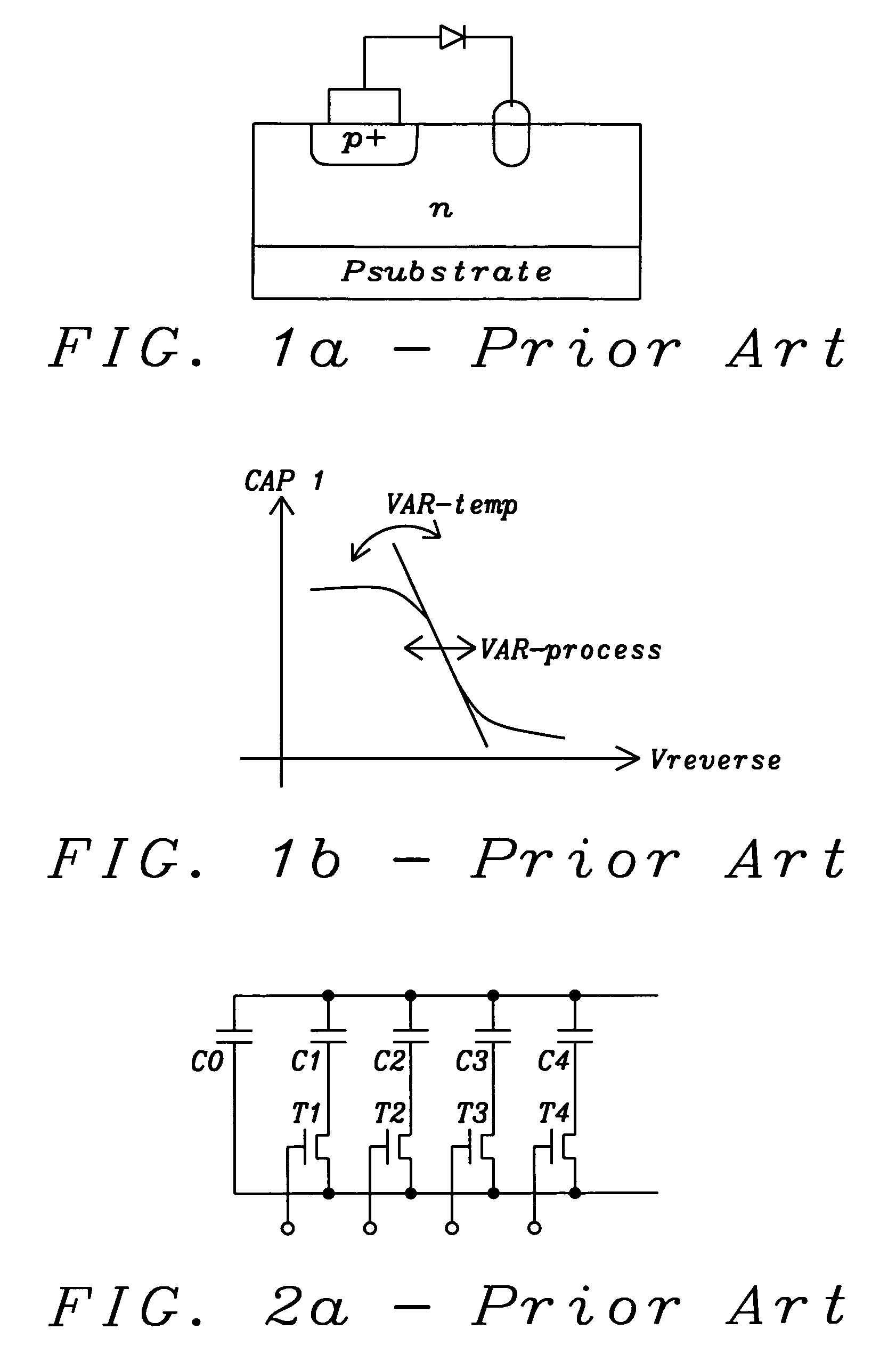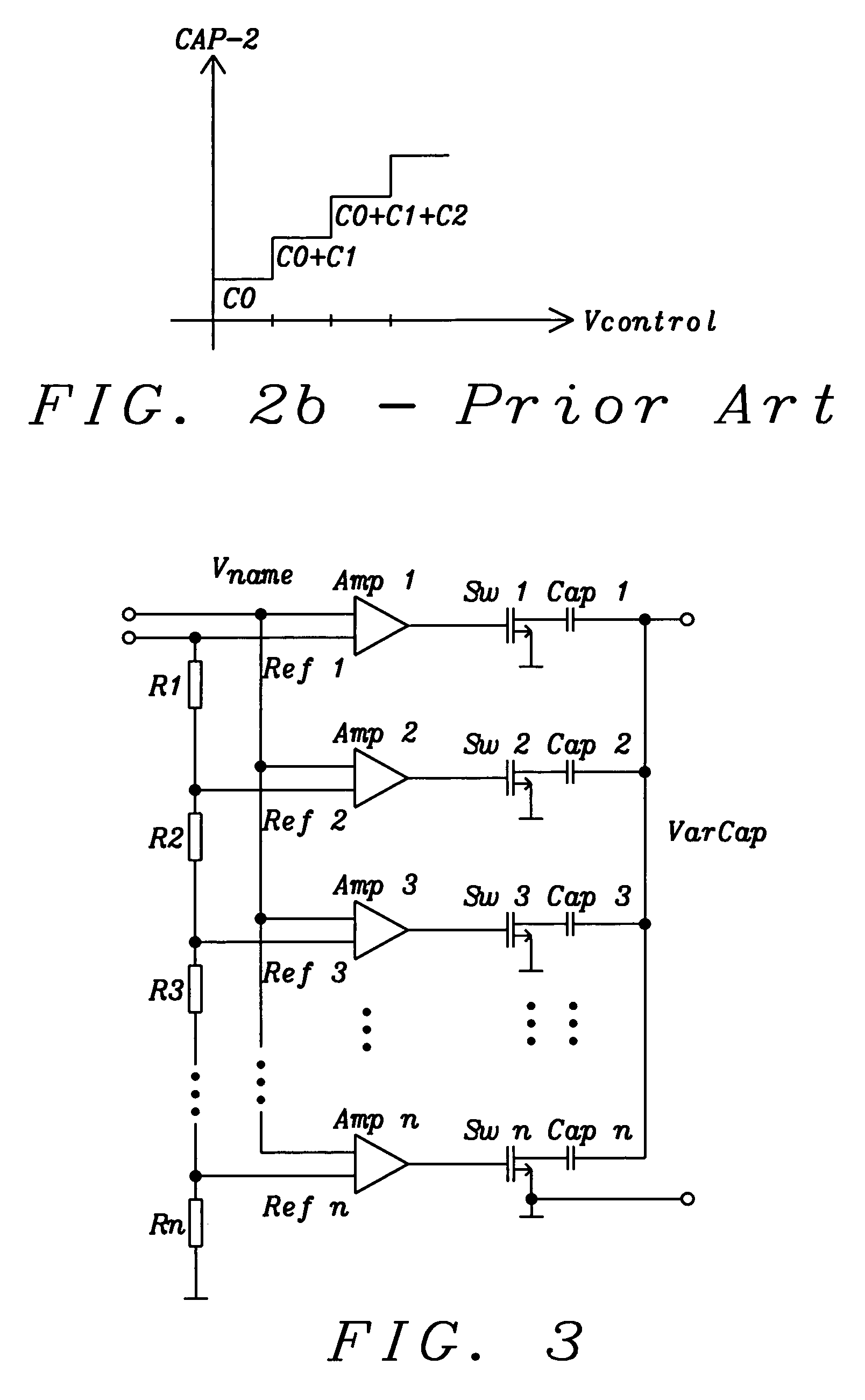High Q linear controlled variable capacitor using translinear amplifier
a translinear amplifier and capacitor technology, applied in the field of voltage controlled variable capacitors, can solve the problems of significant leakage current problem, non-linear character, and large temperature and process dependence, and achieve the effect of steepness of the steady ramp-up/ramp-down operation and the steep change of total capacitan
- Summary
- Abstract
- Description
- Claims
- Application Information
AI Technical Summary
Benefits of technology
Problems solved by technology
Method used
Image
Examples
Embodiment Construction
[0054]The objectives of this invention are to control the capacitance of a variable capacitor in a strictly linear mode through a tuning voltage. A fundamental requirement is to achieve a high Q-factor at the same time.
[0055]A discussion of the general principles of a voltage controlled variable capacitor with linear characteristic, formed of a larger number of fixed capacitor segments and a corresponding number of switching elements, using operational amplifiers is disclosed in the related U.S. patent application Ser. No. 10 / 764,920, filed Jan. 26, 2004, the entire contents of which is incorporated herewith by reference.
[0056]FIG. 3 shows a principal circuit diagram of the referenced related patent application. A set of circuits to control the switching operation in a ramp-up / ramp-down manner, contains, typically besides other components, the set of operational amplifiers Amp 1 to Amp n. Sw 1 to Sw n are said switching devices and Cap 1 to Cap n are said capacitors that will be swi...
PUM
 Login to View More
Login to View More Abstract
Description
Claims
Application Information
 Login to View More
Login to View More - R&D
- Intellectual Property
- Life Sciences
- Materials
- Tech Scout
- Unparalleled Data Quality
- Higher Quality Content
- 60% Fewer Hallucinations
Browse by: Latest US Patents, China's latest patents, Technical Efficacy Thesaurus, Application Domain, Technology Topic, Popular Technical Reports.
© 2025 PatSnap. All rights reserved.Legal|Privacy policy|Modern Slavery Act Transparency Statement|Sitemap|About US| Contact US: help@patsnap.com



